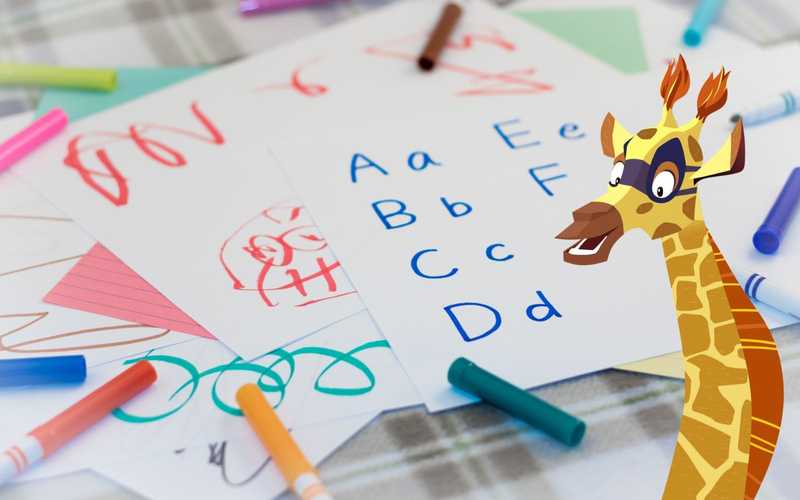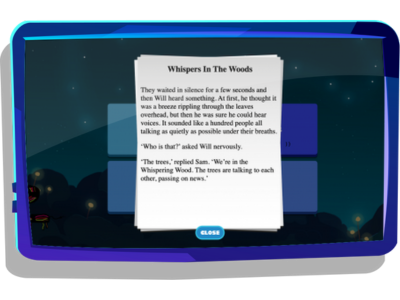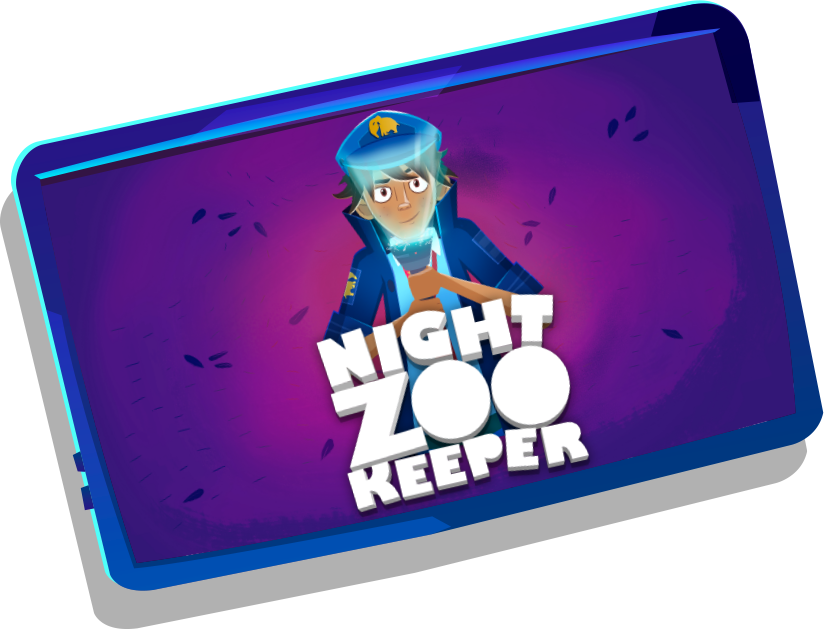What is writing comprehension?


Writing comprehension is more than just putting words on paper - it’s about making sense of ideas, structuring thoughts clearly, and communicating meaning effectively. It helps children not only understand what they’ve read but also respond to it in a thoughtful, organized way.
In this post, we’ll explore what writing comprehension is, why it matters, and how you can help your child develop this essential skill with confidence!
The importance of writing comprehension
Writing comprehension is like being a detective with a pencil. It involves reading a text, understanding its meaning, and expressing that understanding through writing. This skill is key to academic success, helping children think critically and communicate effectively.
When your child masters writing comprehension, they can:
- Analyze and interpret information: writing helps children break down texts, identify key ideas, and draw conclusions.
- Express their thoughts clearly: organizing ideas in writing teaches them to structure sentences and communicate meaning effectively.
- Develop critical thinking skills: summarizing, comparing, and evaluating texts encourages deeper thinking and problem-solving.
- Improve overall communication: strong writing skills lead to better verbal communication and storytelling abilities.
By strengthening writing comprehension, your child will gain the confidence to share their ideas with the world!

Choosing the right comprehension texts
Selecting the right texts for comprehension exercises is key to keeping your child engaged and helping them build strong reading and writing skills.
Taking time to understand what works for your child is crucial, as comprehension can be a tricky skill to master. While they'll be expected to read and understand set texts depending on their grade level, starting with, for example, a topic they're interested in can be a great way to encourage them to develop their comprehension skills. This should keep your child motivated and interested in the task for a longer period of time, encouraging a deeper exploration of the text and boosting their general understanding of the topic at hand.
It's also important to ensure that the texts you choose are age-appropriate, as this will have an impact of your child's general understanding of its vocabulary, topic and writing style.
When selecting texts, consider:
- Your child’s current reading level.
- Their interests (animals, space, history, etc.).
- A mix of genres (stories, articles, poems).
Planning comprehension sessions
A well-structured comprehension session can make all the difference in helping children develop strong reading and writing skills. With thoughtful planning, sessions become more engaging, productive, and tailored to your child’s needs.
Planning comprehension lessons ensures that your child is learning key skills needed in order to consume and explain texts in written form. It's also a great way to get your child to understands key concepts, such as decoding meanings, retelling, and inferencing, without feeling frustrated or discouraged.
How to plan effective sessions:
- Set a clear structure: outline the session’s goals, whether it’s summarizing, analyzing themes, or responding to prompts.
- Pre-read the text: familiarize yourself with it to anticipate tricky words or concepts your child may need help with.
- Prepare thoughtful questions: go beyond basic recall - ask questions that encourage deeper thinking, connections, and creative responses.
Providing relevant background information
Sometimes, children need a little extra context to fully grasp a text - especially when it introduces unfamiliar settings, historical events, or complex concepts. A bit of background knowledge can help your child make connections and truly understand what they’re reading and writing about.
Providing relevant background information helps children connect new ideas to what they already know, making learning more meaningful. It also clarifies challenging ideas that some texts assume prior knowledge of, preventing confusion. When children have a stronger grasp of the setting and themes, they’re more engaged, confident, and eager to explore the text further.
Try these strategies:
- Give a quick summary: provide a brief, age-appropriate overview of the topic before diving in.
- Introduce key vocabulary: explain difficult words beforehand so they don’t become stumbling blocks.
- Discuss the author’s purpose: is the text meant to inform, entertain, or persuade? Helping kids recognize this improves comprehension.
Crafting and reviewing comprehension questions
The right questions don’t just check if a child has read a text - they encourage critical thinking, spark discussions, and help children connect ideas in meaningful ways.
Thoughtfully reviewing comprehension questions ensures they are clear, purposeful, and engaging. It helps identify any gaps in coverage, ensuring a balanced mix of literal, inferential, and evaluative questions. A good variety of question formats - such as multiple-choice, open-ended, and creative response questions - keeps comprehension practice dynamic and enjoyable.
What to consider when reviewing questions:
- Are they clear and easy to understand? Confusing questions can create frustration and hinder comprehension.
- Do they assess different levels of thinking? A mix of recall, inference, and analysis questions helps children develop well-rounded comprehension skills.
- Is there a variety of question formats? Multiple-choice, short answers, and discussion-based prompts all serve different purposes in assessing understanding.
Quality questions lead to quality comprehension. Taking the time to craft and review them ensures that children engage with texts thoughtfully and gain confidence in their reading and writing skills.
Scaffolding answers
Scaffolding is a teaching method that provides temporary support to help children develop stronger comprehension skills. Scaffolding allows them to tackle complex tasks with confidence by breaking down difficult concepts into clear, step-by-step processes. This encourages students to properly grasp each comprehension skill fully before moving onto the next.
Try these scaffolding techniques:
- Break big questions into smaller parts: instead of asking, "what is the main idea?" try leading with, "what happened first?" and "how did the character react?" before guiding them to the bigger picture.
- Use question sequences to guide thinking: start with factual recall, move to inference, and then encourage personal reflection. This progression builds deeper comprehension.
- Provide vocabulary support: If a text contains challenging words, discuss their meanings beforehand to remove obstacles to understanding.
Question stems
Question stems are a simple yet powerful tool for strengthening comprehension skills. These open-ended prompts help children to make predictions, analyze characters, and draw conclusions. Instead of asking yes-or-no questions, which can lead to short, surface-level answers, question stems guide children toward better engagement and thoughtful responses.
One of the best things about question stems is their flexibility - they can be adapted to fit any book, article, or passage. Whether your child is reading a story, a nonfiction article, or even writing their own piece, using question stems ensures they’re thinking about the material in a structured yet open-ended way.
Examples of useful question stems:
- "What do you think will happen next?" – encourages prediction and reasoning.
- "How does the character feel when…?" – helps children explore emotions and character development.
- "What is the main idea of this paragraph?" – reinforces summarization and key idea identification.
- "Why do you think the author included…?" – promotes analysis of writing choices.
- "How would you change the ending?" – sparks creativity and personal interpretation.
By using question stems, you’re giving your child a framework for thinking critically about texts without overwhelming them. These prompts encourage discussion, expand their ability to express ideas, and help them become more confident readers and writers.
Response formats
Using different response formats in comprehension exercises is beneficial because they can cater to lots of different learning styles. For example, some children prefer a more visual approach to tasks, whereas other students may be more comfortable with talking through the text they've read before putting pen to paper.
They also help to keep children engaged by avoiding the monotony that can sometimes be attributed to a comprehension task. Different response formats can develop a wider set of skills too, including decision-making, creative thinking, and general explanation writing skills.
Try incorporating these formats in your child's writing comprehension sessions:
- Multiple choice questions
- True/false statements
- Short answer responses
- Graphic organizers or diagrams
How Night Zookeeper can help

Night Zookeeper is a reading & writing program designed to boost children's skills in a fantastically fun way!
Here's how it can help with writing comprehension:
- Interactive lessons that cover various aspects of reading and writing.
- Personalized feedback from qualified tutors.
- Games and challenges that make learning engaging and entertaining.
Ready to give your child's writing comprehension skills a boost? Try Night Zookeeper for free with our 7-day trial. No strings attached - just pure learning fun!
Got any questions? Email us at [email protected]. Follow us on social media:


Make Reading & Writing Fantastically Fun!
- Award-winning reading & writing program for kids
- Improves spelling, grammar, punctuation & vocabulary
- Over 1,000 different learning games and activities


Why is Writing Important for Children?


“My child hates writing.” What do I do?


8 Fantastically Fun Writing Games


